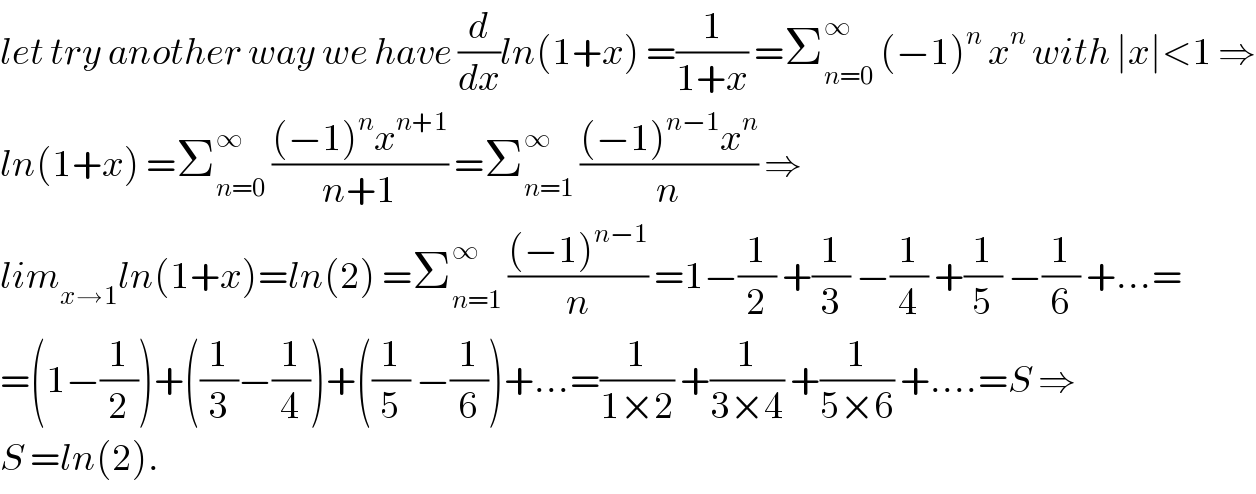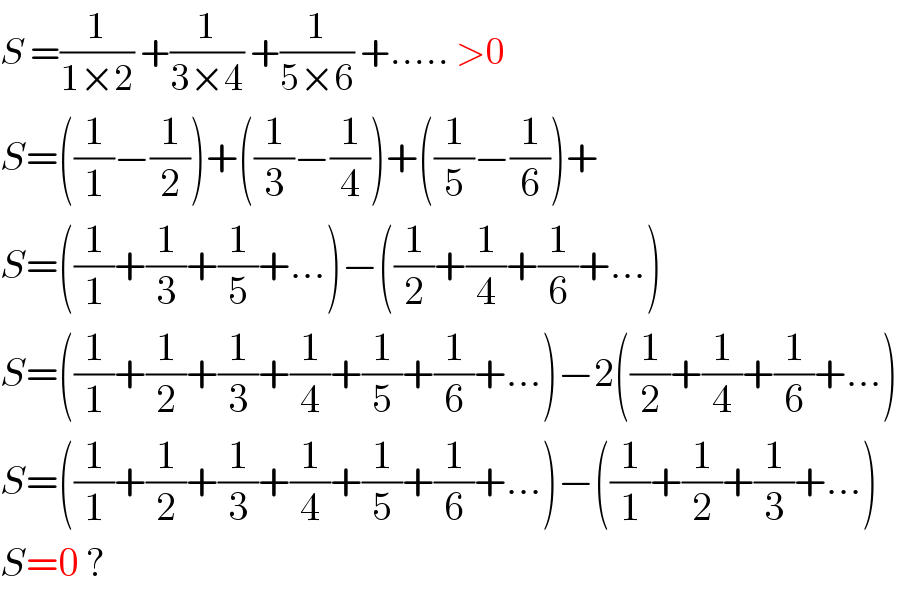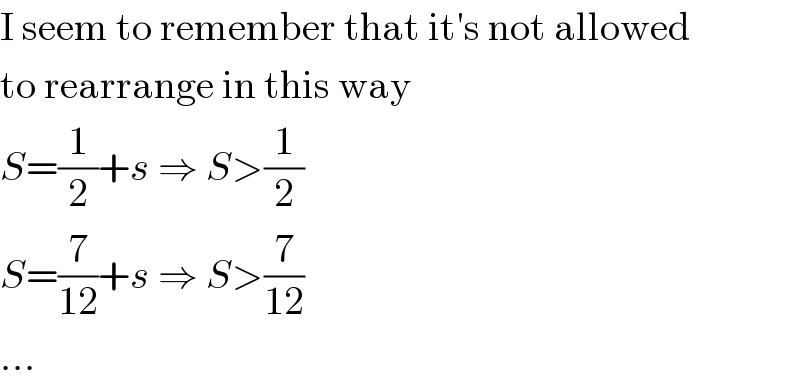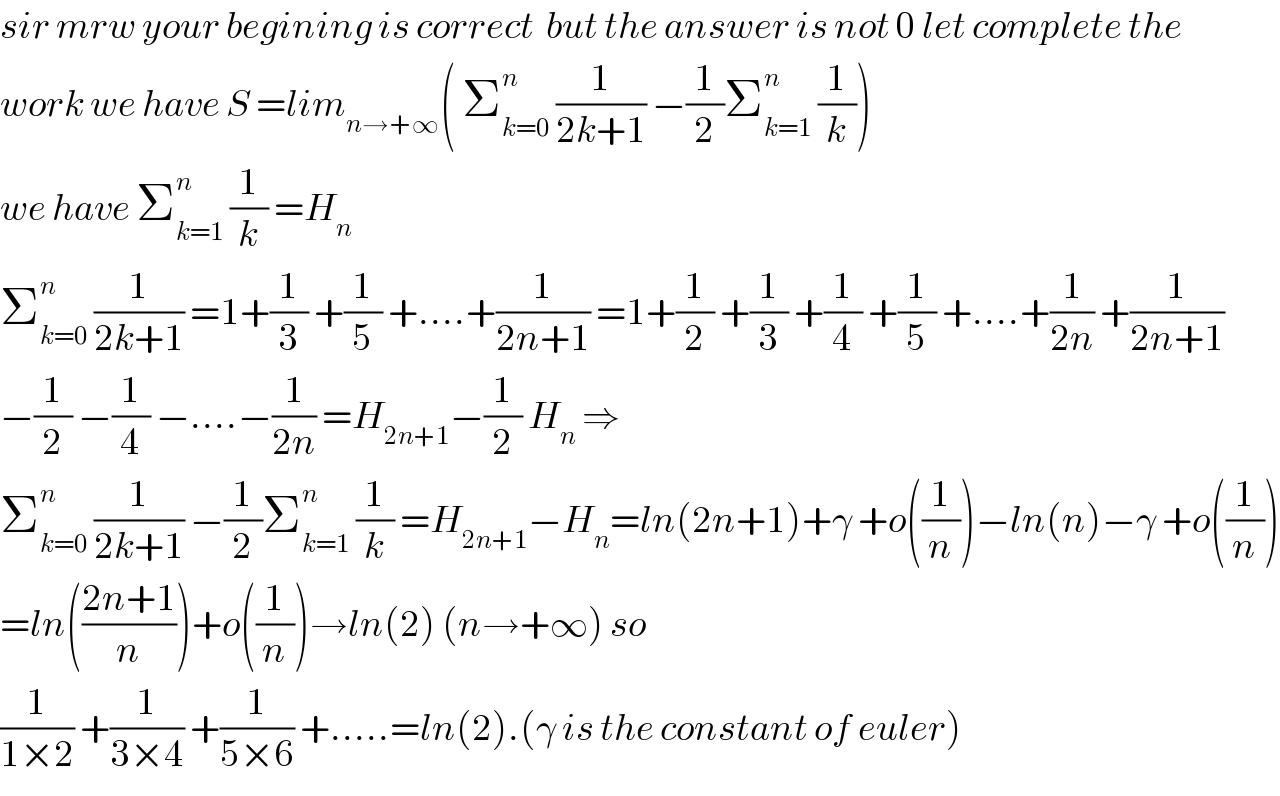
Question and Answers Forum
Previous in Relation and Functions Next in Relation and Functions
Question Number 63101 by mathmax by abdo last updated on 29/Jun/19

Commented by mathmax by abdo last updated on 29/Jun/19

Answered by mr W last updated on 29/Jun/19

Commented by MJS last updated on 29/Jun/19

Commented by turbo msup by abdo last updated on 29/Jun/19

Commented by turbo msup by abdo last updated on 29/Jun/19

Commented by mathmax by abdo last updated on 29/Jun/19

Commented by mr W last updated on 29/Jun/19

Commented by mathmax by abdo last updated on 29/Jun/19

Answered by MJS last updated on 29/Jun/19

Answered by naka3546 last updated on 29/Jun/19

